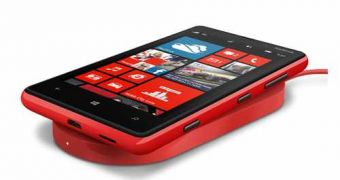Finnish mobile phone maker Nokia is looking to broaden its portfolio of handsets available for purchase in the United States through wireless carriers this year.
At the moment, the company’s Windows Phone 8-based Lumia 920 and Lumia 820 smartphones are available in the country through AT&T, T-Mobile and Verizon, and more of them are set to be launched soon, it seems.
Chris Weber, Nokia’s executive vice president of sales and marketing, has confirmed that, a recent article on FierceWireless notes.
“We constantly evaluate, in the U.S. market or whatever market, what partners we're with. Right now our focus is really on broadening the portfolio with AT&T, Verizon and T-Mobile,” Weber said.
Furthermore, he explained that the company was looking into bringing Lumia devices at all price points via these carriers in the United States.
Apparently, there was no mentioning regarding the launch of these phones through wireless carrier Sprint, which has announced plans to add Windows Phone 8 devices to its offering only a few days ago.
For those out of the loop, we should note that Nokia currently sells its Windows Phone 8-powered Lumia 920 smartphone exclusively through AT&T in the United States.
However, the mid-range Lumia 820 is available through Verizon and T-Mobile as well, under the names of Lumia 822 and Lumia 810, respectively.
Based on Weber’s statement, we can expect the low-end Lumia 620 to land at these carriers in the near future, though the launch of new Windows Phone 8 devices is also possible.
Nokia has started to see increased interest in its Windows Phone devices lately, and announced yesterday sales of 4.4 million Lumia smartphones for the fourth quarter of the last year, marking an increase of around 50 percent when compared to the third quarter.
Nokia’s Windows Phone 8 handsets appear to be driving demand, both in the US market and elsewhere, though sales are influenced by the increasingly tight competition from Android and iOS on the smartphone segment.

 14 DAY TRIAL //
14 DAY TRIAL //